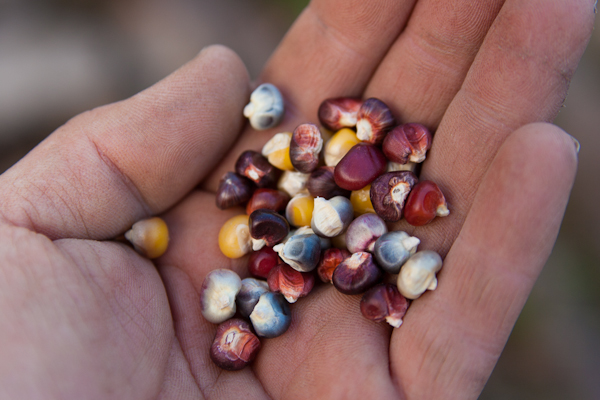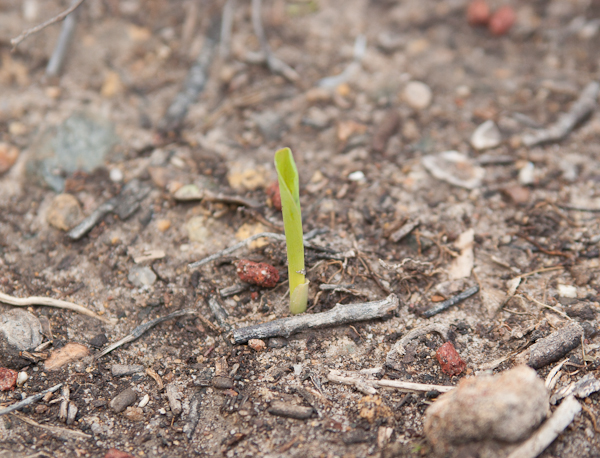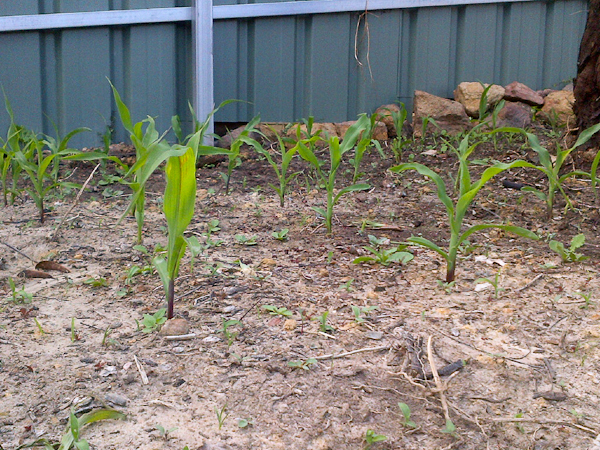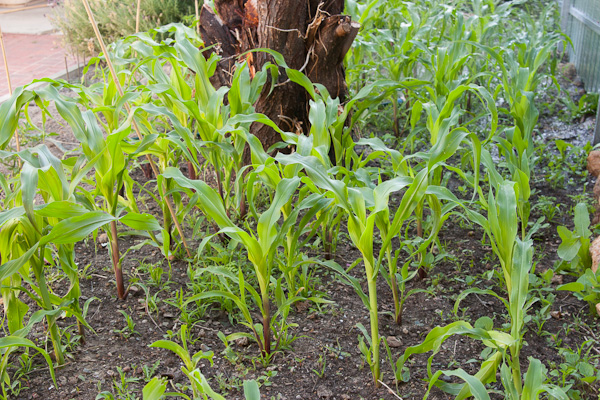I’ve come to realise that I’m in love with polenta (which if you don’t know, is a kind of porridge or paste made from cooked corn meal). It is good for you, delicious, texturally satisfying, and goes in a surprising range of dishes – from appetisers to desserts. So when I coincidentally read mister meatballs post about growing your own, then the salt’s writeup about the flavour of heritage varieties, I knew I had to try growing it myself.
The first step in any new project is to read up, so here’s what I learned before putting anything into practice!
Yield
It’s always hard to estimate how much of a crop you’ll get when most figures give bushels per acre and assume farm equipment and so on but from some internet searches I think it’s possible I’ll get 2kg of dried corn from my 8-10 square meter patch. I could be waaaay off so it will be interesting to see how much I get and how long it lasts. It seems like you need a little more space than the typical suburban garden if you want to grow a whole years supply but I will update here when the harvest is in.
Varieties
There are a number of types of corn but the varieties that I’ve seen sold so far can be divided into sweet corn, popping corn, flint corn and dent corn. Dent corn (or field corn) is used to make softer flours for things like tortillas and fine cornflour. Flint corn seems to be the variety most often used for polenta. Sweet corn and popping corn are used as the name suggests – sweet corn is the variety that we eat fresh on the cob. Sweet and popping corn are said not to be as good for making flour although my dad tried making tortillas using popping corn for the masa and was happy with the results. Of course, within these varieties are lots of different types. Floriania Red is said over at Mother Earth News to be good for polenta but after I saw photos of Painted Mountain corn at Easy Living The Hard Way, I had to get some. If you’re in the US, Amazon stock this variety.It isn’t exactly easy to find the seeds in Australia so please share any sources you might have!
Growing
Corn is usually planted in spring but check the recommendations & conditions for your local area. Here in South Australia we are still getting a bit of rain but a warm spring overall so I decided to start planting! The first step was preparing a garden bed to grow the corn. Corn likes rich, loose soil so I turned the dirt over with a mattock, then sprinkled over some gypsum to improve drainage as the patch had a little clay. I also added some organic fertiliser with added potash, then raked the beds level and worked the fertiliser in. Corn is pollinated by the wind transferring pollen between plants, so it is best planted in multiple rows fairly close together. The usual recommendation seems to be 30cm (1 foot) between rows and 10cm (4in) between plants in the row. The rows will be thinned later to 20cm between plants (8in). The initial double spacing is to allow for some seeds not sprouting.
I tapped in a stake at each end of the row, and used a string line to get the spacing right. I dug a furrow about 2cm (4/5 in) deep with a hoe and dropped the seeds into the furrow, then filled it and patted down. After sowing the seed I gave the patch a long water – the soil will need to stay damp constantly until the seeds sprout (then watered regularly afterwards too). I read one recommendation to soak the seeds overnight before planting but to be frank I was impatient! We’ll see how it works out.
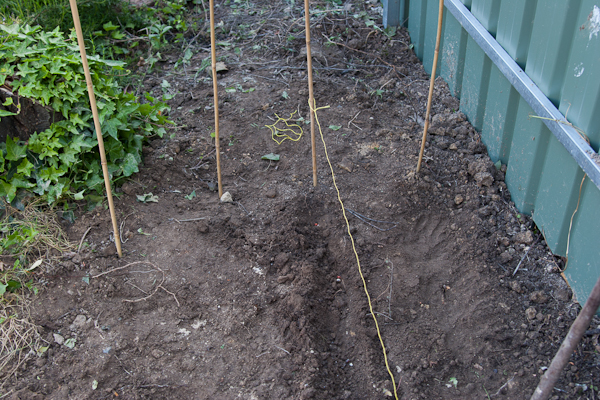
Week 1
The corn started to sprout after about 10 days. I scattered around some organic snail pellets as I’ve been told those new green shoots are very tempting for slugs and snails.
Week 3
Here we are 3 weeks after planting. The corn is rocketing along, maybe a hand width high. I thinned out the rows today – I couldn’t bring myself to kill all the babies so I tried transplanting a few of the small shoots to the end of the rows where they had more room – a few days on and they seem to be doing fine! Time will tell if they end up as healthy as the others.
Week 7
The corn is is probably a bit slower than expected at this point because we’ve had quite a few unusually cold spells, but when the sun is out it shoots up noticeably. It I have given it a drink of liquid fertiliser and a sprinkle of an organic fertiliser pellet. It’s hard getting between the rows to weed!
Week 10
Seriously rocketing up over the last few weeks, my corn has now flowered and is developing ears. The flowers are on top while the ears start showing up as tufts of ‘beard’ along the stalks. A common recomendation is to tap the stals at this stage to make sure pollen drifts down to pollinate the ears.


Still to come:
- harvesting
- drying
- shucking
- grinding
